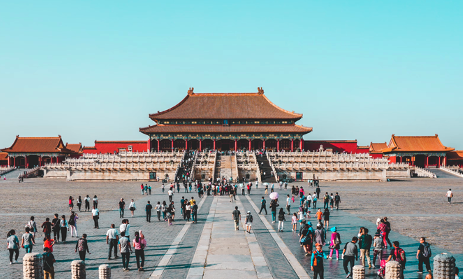
At the opening ceremonies of the February 2022 Beijing Winter Olympics, Chinese President Xi and Russian President Vladimir Putin shook hands on a massive trade agreement and a “no-limits” alliance that changed the geopolitical landscape. Less than a month after the Olympics ended, Russian troops stormed into Ukraine, starting a war that continues to rage. The “no-limits” handshake and Russian aggression created a bifurcation of the world’s nuclear powers. Relations between the US/NATO/Japan and their allies with China/Russia and their partners continued to deteriorate, reaching a new low in late January 2023.
From January 28 through February 4, 2023, a Chinese-operated, enormous white high-altitude balloon traveled across North American airspace, including Alaska, western Canada, and the contiguous United States. China claims a privately operated weather balloon had blown off course. The U.S. government claimed it was a government spy mission to hone the ability to gather data about American military bases. The balloon traveled over Malmstrom Air Force Base in Montana, the home to U.S. land-based nuclear weapons in more than 150 missile silos. On February 4, on orders from the U.S. President, a U.S. F-22 fighter fired a Sidewinder missile taking down the balloon. China called the action an “over-reaction” that could lead to “serious repercussions.”
After a year of tensions between Washington and Beijing, the balloon was the latest incident that put the relationship on thin ice. After the initial downing, the U.S. has shot down other unidentified objects over its territory. Markets reflect the economic and geopolitical landscape, which are highly uncertain in mid-February 2023.
The U.S. and China are the world’s leading economies and military powers
- The world’s economy stood at $101.6 trillion at the end of 2022.
- The U.S. has the world’s leading GDP of $25.035 trillion.
- China is second, with a GDP of $18.321 trillion.
- The U.S. and China own 42.67% of the worldwide economy and rank first and third in military strength.
Commodity flows are global- China dominates raw material production and consumption
- China is the world’s most populous country, with over 1.439 billion people.
- China is a leading raw material producer via domestic output and worldwide investments.
- China is the top commodity consumer.
The stock market does not react well to geopolitical turmoil
- Uncertainty tends to be bearish for the U.S. stock market.
- The S&P 500 plunged in 2008 during the global financial crisis, in 2020 during the worldwide pandemic, and 2022 when Russia invaded Ukraine.
- Geopolitical turmoil tends to cause trade to decline as tariffs and trade barriers distort prices and global supply chains.
Global bifurcation threatens currency market benchmarks
- In 2022, Russia and China moved towards non-dollar assets for cross-border transactions.
- Sanctions caused Russia to use gold to back its ruble in April 2022.
- The U.S. dollar has been the world’s reserve currency since WW II, replacing the British pound.
- The bifurcation of the world’s nuclear powers threatens the U.S. dollar’s position in the global financial system.
Interest rates have increased to fight inflation, but market volatility could interfere with the battle
- The U.S. Federal Reserve has increased the short-term Fed Funds Rate by 4.625% from March 2022 through February 2023 to combat inflationary pressures. Quantitative tightening reduces the Fed’s balance sheet and pushes longer-term rates higher.
- The Bank of England, European Central Bank, and other central banks have followed the Fed, tightening monetary policy to address inflation.
- Uncertainty on the geopolitical landscape, the rising potential of conflicts, and economic turmoil could derail the central bank’s efforts to fight inflation, as stimulating economies during troubled times causes interest rate cuts.
- Deteriorating relations between the world’s leading economies pose significant threats and challenges to markets across all asset classes.
Thanks for reading, and stay tuned for the next edition of the Tradier Rundown!